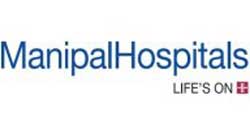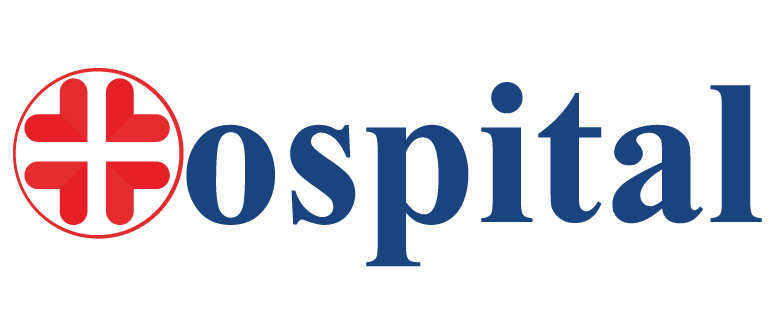
A cholecystectomy is a surgical procedure that is conducted to remove the gallbladder which is a pear-shaped organ and is located just below the liver on the upper right side of the abdomen.
The function of the gallbladder is to collect and store bile which is a digestive fluid produced in the liver.
A cholecystectomy carries only a small risk of complications. In most cases, the patient is able to go home the same day of the procedure. It is commonly performed by inserting a tiny video camera and special surgical tools through small incisions to see inside the abdomen and thus remove the gallbladder. This is also sometimes referred to as a laparoscopic cholecystectomy.
Why it's done?
Types of Cholecystectomy:
Laparoscopic Cholecystectomy:
A laparoscopic cholecystectomy is a surgery during which the doctor removes the gallbladder. This procedure uses several small cuts instead of a large one. A laparoscope which is a narrow tube with a camera, is inserted through one incision. This allows the doctor to see the gallbladder on a screen. Following this, the gallbladder is then removed through another small incision.
Open Cholecystectomy:
An open cholecystectomy might be required instead of a laparoscopic cholecystectomy either because of a major scarring from a previous surgery, a bleeding disorder, a condition that would make it difficult to see through the laparoscope.
In this procedure, a single cut is made below the right side of the rib cage or in the center of the abdomen. The gallbladder is cut away from surrounding tissue. The blood supply is tied off and divided. Sometimes a cholangiogram or a special X-ray is done to check for stones in the common bile duct. If there are stones in the common bile duct, they are removed at the time. The skin is closed using surgical clips and stitches.
What is cholecystitis?
Cholecystitis is defined as inflammation of the gall bladder. Most commonly this problem or inflammation, arise in this system when the flow of bile is stopped or interrupted due to stone or if infection of biliary tract occurs
Do I have any dietary restrictions after cholecystectomy?
It may take a few days for your appetite to return to normal after the surgery. There are no specific restrictions after cholecystectomy, but keep in mind that foods high in fat may cause diarrhea.
Do I have any activity restrictions?
You may return to your normal activities as soon as you feel able. For some people, this may take several weeks to completely gain their strength.
Types of Cholecystectomy:
Laparoscopic Cholecystectomy:
A laparoscopic cholecystectomy is a surgery during which the doctor removes the gallbladder. This procedure uses several small cuts instead of a large one. A laparoscope which is a narrow tube with a camera, is inserted through one incision. This allows the doctor to see the gallbladder on a screen. Following this, the gallbladder is then removed through another small incision.
Open Cholecystectomy:
An open cholecystectomy might be required instead of a laparoscopic cholecystectomy either because of a major scarring from a previous surgery, a bleeding disorder, a condition that would make it difficult to see through the laparoscope.
In this procedure, a single cut is made below the right side of the rib cage or in the center of the abdomen. The gallbladder is cut away from surrounding tissue. The blood supply is tied off and divided. Sometimes a cholangiogram or a special X-ray is done to check for stones in the common bile duct. If there are stones in the common bile duct, they are removed at the time. The skin is closed using surgical clips and stitches.
What is cholecystitis?
Cholecystitis is defined as inflammation of the gall bladder. Most commonly this problem or inflammation, arise in this system when the flow of bile is stopped or interrupted due to stone or if infection of biliary tract occurs
Do I have any dietary restrictions after cholecystectomy?
It may take a few days for your appetite to return to normal after the surgery. There are no specific restrictions after cholecystectomy, but keep in mind that foods high in fat may cause diarrhea.
Do I have any activity restrictions?
You may return to your normal activities as soon as you feel able. For some people, this may take several weeks to completely gain their strength.

Rating :


With over 10 years for being in operations this hospital enjoys its location in South Delhi overseeing the huge green belt extending from hospital till the QutabMinar comp.....

Rating :
Dr. Kalia is taking steps to ensure that all the pros and cons of hair transplant are put forward to the patient that enable him or her to make the correct decision. The patient friendly approach of Dr. Kalia is bringing a revolution i.....

Rating :
Manipal Hospital Whitefield (MHW) is a unit of the renowned Manipal Hospitals network that is known for Quality and Patient care. It is a 280 beds multi-specialty Hospital offering world class services in .....

Rating :



Rating :
Located in the National Capital Region of New Delhi - Aligarh, Varun Trauma & Burn Centre (P) Ltd., a unit of Varun Hospital a Super-Specialty Hospital, is just a 10 minute drive from Aligarh's Railway Station & Bus Stop. Our facility is verified as a L.....

Rating :

Our experts have treated 5 lakh+ patients across 25+ specialties like Cardiac Sciences, Minimal Access and Laparoscopic Surgery, Neurosciences, Urology, Orthopedics, Aesthetics and Reconstructive Surgery and Nephrology. We are a 74 bed.....

Rating :
In the year 1998, Dr. Sunil Chandra Bagchi and Dr. Ratish Ch. Paul founded Susrut Eye Foundation & Research Centre with a motto to eradicate blindness and make this world a beautiful place to those who are still in darkness. They r.....

Rating :
India’s large and diverse population warrants an efficient health care infrastructure that should be accessible to all strata’s of society. Good quality health care should not be a privilege of the elite only. Metro Group.....

Rating :

Rating :
Hospital Profile Description Currently Not Available




-1505212973.jpg)


A cholecystectomy is a surgical procedure that is conducted to remove the gallbladder which is a pear-shaped organ and is located just below the liver on the upper right side of the abdomen.
The function of the gallbladder is to collect and store bile which is a digestive fluid produced in the liver.
A cholecystectomy carries only a small risk of complications. In most cases, the patient is able to go home the same day of the procedure. It is commonly performed by inserting a tiny video camera and special surgical tools through small incisions to see inside the abdomen and thus remove the gallbladder. This is also sometimes referred to as a laparoscopic cholecystectomy.
Why it's done?
Types of Cholecystectomy:
Laparoscopic Cholecystectomy:
A laparoscopic cholecystectomy is a surgery during which the doctor removes the gallbladder. This procedure uses several small cuts instead of a large one. A laparoscope which is a narrow tube with a camera, is inserted through one incision. This allows the doctor to see the gallbladder on a screen. Following this, the gallbladder is then removed through another small incision.
Open Cholecystectomy:
An open cholecystectomy might be required instead of a laparoscopic cholecystectomy either because of a major scarring from a previous surgery, a bleeding disorder, a condition that would make it difficult to see through the laparoscope.
In this procedure, a single cut is made below the right side of the rib cage or in the center of the abdomen. The gallbladder is cut away from surrounding tissue. The blood supply is tied off and divided. Sometimes a cholangiogram or a special X-ray is done to check for stones in the common bile duct. If there are stones in the common bile duct, they are removed at the time. The skin is closed using surgical clips and stitches.
What is cholecystitis?
Cholecystitis is defined as inflammation of the gall bladder. Most commonly this problem or inflammation, arise in this system when the flow of bile is stopped or interrupted due to stone or if infection of biliary tract occurs
Do I have any dietary restrictions after cholecystectomy?
It may take a few days for your appetite to return to normal after the surgery. There are no specific restrictions after cholecystectomy, but keep in mind that foods high in fat may cause diarrhea.
Do I have any activity restrictions?
You may return to your normal activities as soon as you feel able. For some people, this may take several weeks to completely gain their strength.

Rating :


With over 10 years for being in operations this hospital enjoys its location in South Delhi overseeing the huge green belt extending from hospital till the QutabMinar comp.....

Rating :
Dr. Kalia is taking steps to ensure that all the pros and cons of hair transplant are put forward to the patient that enable him or her to make the correct decision. The patient friendly approach of Dr. Kalia is bringing a revolution i.....

Rating :
Manipal Hospital Whitefield (MHW) is a unit of the renowned Manipal Hospitals network that is known for Quality and Patient care. It is a 280 beds multi-specialty Hospital offering world class services in .....

Rating :



Rating :
Located in the National Capital Region of New Delhi - Aligarh, Varun Trauma & Burn Centre (P) Ltd., a unit of Varun Hospital a Super-Specialty Hospital, is just a 10 minute drive from Aligarh's Railway Station & Bus Stop. Our facility is verified as a L.....

Rating :

Our experts have treated 5 lakh+ patients across 25+ specialties like Cardiac Sciences, Minimal Access and Laparoscopic Surgery, Neurosciences, Urology, Orthopedics, Aesthetics and Reconstructive Surgery and Nephrology. We are a 74 bed.....

Rating :
In the year 1998, Dr. Sunil Chandra Bagchi and Dr. Ratish Ch. Paul founded Susrut Eye Foundation & Research Centre with a motto to eradicate blindness and make this world a beautiful place to those who are still in darkness. They r.....

Rating :
India’s large and diverse population warrants an efficient health care infrastructure that should be accessible to all strata’s of society. Good quality health care should not be a privilege of the elite only. Metro Group.....

Rating :

Rating :
Hospital Profile Description Currently Not Available




-1505212973.jpg)

Not Available
Medtravels ensures bridging the gap and providing accessibility for patients to interact directly with healthcare service providers. We remain committed to connecting all stakeholders across geographies, and focusing on taking Healthcare beyond boundaries.

We are one of the first few organizations in India to be NABH certified. This itself speaks out loud about the services and facilities we provide to our clients while ensuring optimum quality at all aspects.

We ensure to bring you the best in terms of both healthcare quality & affordability. We value our customers so providing the best of services to them at an affordable price is our objective.

We understand that getting the first opinion is the most crucial step towards your healthcare journey and so based on your reports, we provide you consultation(s) or opinion(s) from top-notch doctors & consultants without any charges.

Travelling outside your home country can be a rigorous affair. So, here we are, to guide you through all the necessities such as – Medical Visa, Air Bookings, Accommodation, Air Ambulance, Pharmacy, Medical Loan, Leisure Travel.

We constantly strive to provide our clients with maximum options and so we have global coverage in terms of Healthcare Providers. We provide you hospital options from – INDIA, SINGAPORE, THAILAND, MALAYSIA, TURKEY & the list goes on

Our objective is to work with complete transparency with both our partners & clients. With this motto, we maintain not to charge you for anything. When you come for treatment, you pay the hospital directly.
Not Available